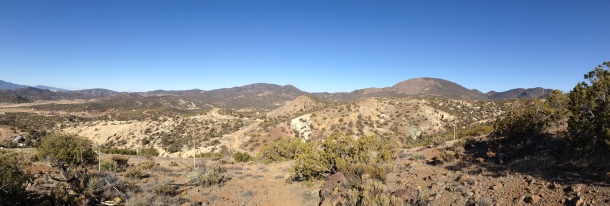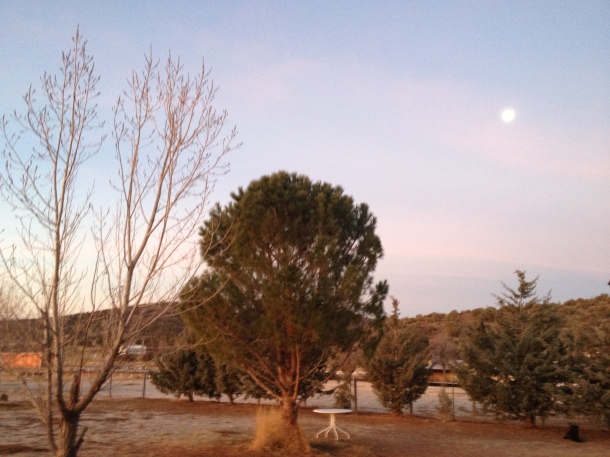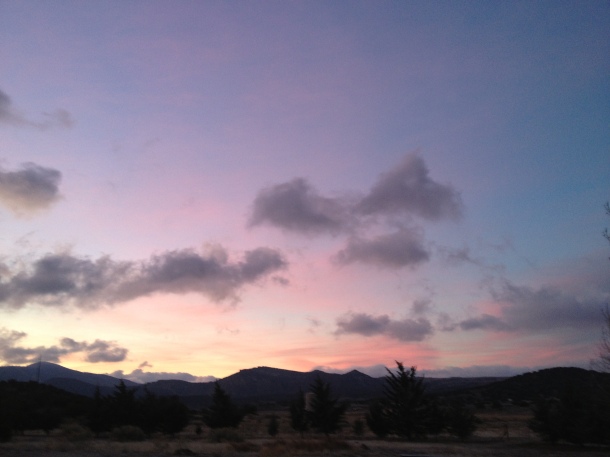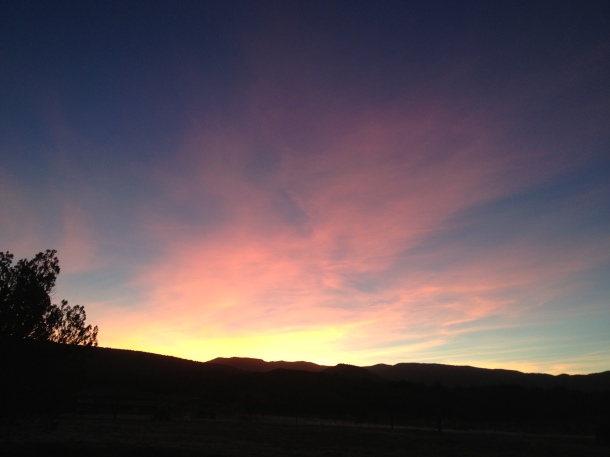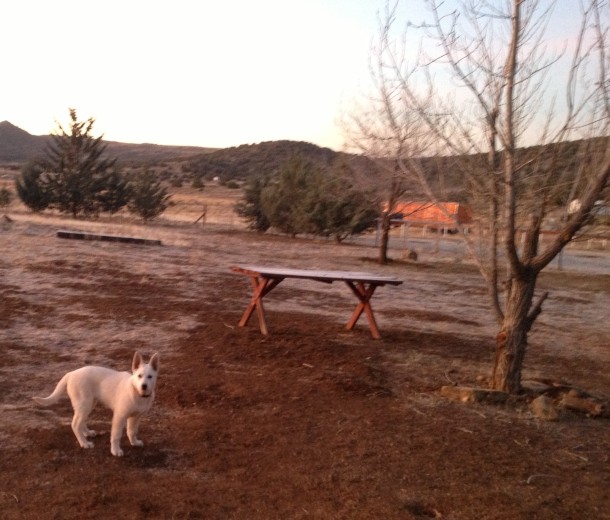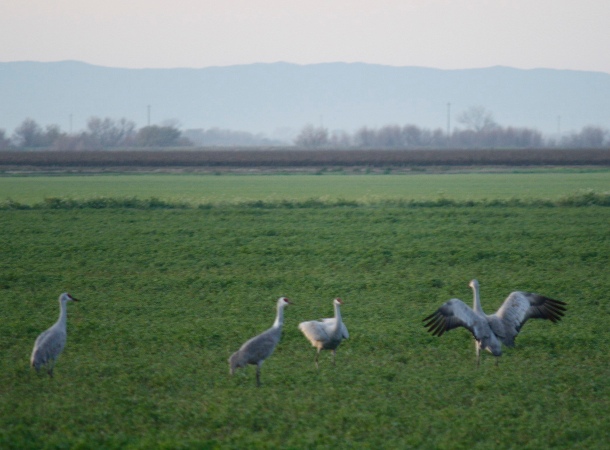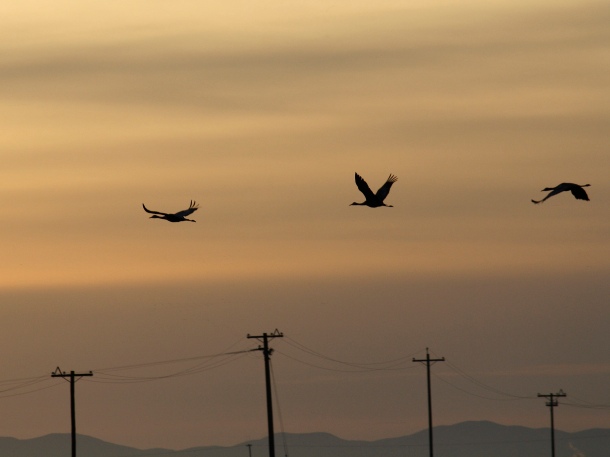It’s going to be a long dark winter after losing those 20 beautiful children and 6 courageous women to gunfire in Newtown. So instead of my usual nature blog, I decided to post a personal essay that I wrote in September about the psychological effects of the movie theater shooting in Aurora, Colorado.
Dark Night Rises
I had just left Bakersfield, heading east on the 58 past orange groves, grape vines, and oil rigs bobbing up and down like giant praying mantises. The Tehachapi mountains and home loomed before me. But something strange was ahead, just ahead, on a flatbed trailer hauled by a pickup. Several metal objects were strapped to the flatbed, and they looked like bombs.
I’d driven this freeway thousands of times. It was the road I took to work, doctor appointments, shopping, meetings, and anything else I might not be able to do in the small community on the top of the mountain where I live. And I’d seen all kinds of strange objects on the freeway, among them a flatbed loaded with crates labeled Cosmic Debris, a squat old tanker containing liquid sulfur, and all manner of unidentified hardware snaking up the highway among the truckloads of baby carrots and bales of hay. But this struck me as the strangest and most suspicious looking thing I’d seen to date.
I passed the truck slowly, taking a good long look at the cargo. I counted four gray metal objects, each pointed at one end with fins at the other. One fin was much larger than the rest. Red circles surrounded little doors on the sides. Definitely military hardware.
I pulled off at the next exit and hit the emergency button on my phone. I felt more than a little foolish as I tried to explain what I’d seen. “They are gray,” I said, “with fins. They look like bombs or torpedoes or maybe even missiles.”
“What model is the pickup?” the female officer asked.
I hadn’t mentioned the pickup. Apparently I wasn’t the first to call. “Big,” I said, “and white.” I have about as much knowledge of makes and models of trucks as I have of makes and models of weapons. “It’s probably nothing,” I said, “But I really think you should send somebody to check it out.” She assured me that she would.
Back on the highway I turned on the radio to try to pry my mind off the sinister looking hardware and the embarrassment of reporting something that probably had an innocent explanation. A terrorist wouldn’t haul weapons out in the open, would he? But then again, why not? There certainly weren’t any police cars screaming to the scene.
As I passed Weedpatch Highway in the country John Steinbeck had written about in Grapes of Wrath, I caught up to the flatbed again. Heading up the mountain, I tried to put some distance between that white pickup and me. But I got trapped behind a slow moving semi and the pickup with its bullet-shaped cargo passed me. What if it really was missiles? Where would somebody get something like that?
It had been only a week since a crazed kid with orange hair who called himself The Joker had opened fire in a midnight showing of Dark Knight Rises. He’d had no trouble buying tactical gear, a high-capacity drum magazine, and thousands of rounds of ammunition off the internet. He had purchased the assault rifle, the pistol, and the shotgun from local stores, proving that weapons capable of killing or injuring a movie theater full of people in minutes were easy to procure. Why not missiles?
I turned up the radio. PRX was playing a piece about 9-11 mixed in with an original newscast about the atomic bomb. This was all I needed. A soundtrack.
Boom! When I was five, my father worked at Hanford where they manufactured plutonium for the bomb. Hanford was a cold war target. So was the Grand Coulee Dam.
Damn! The pickup was from Arizona. Could it be carrying dirty bombs? Were they going to be used to blow up Hoover Dam?
The flatbed was directly in front of me now and the point of one of its weapons of mass destruction stared me straight in the face. I could not look away. Voices from 9-11 called out to me from the radio, along with the victims of all the shootings that seemed to occur so frequently these days. The Joker’s frightening eyes stared into mine, Pow! Pow! Pow! and an A-bomb burst in my brain.
I got off at my exit, shaken. I watched the flatbed head east until it disappeared down the rise. I had driven 40 miles up a mountain, never able to escape the pickup and its deadly cargo. At the end of the off-ramp, I dialed 911. “I called when I was in Bakersfield, and no one came,” I said. “I don’t think anyone should be allowed to drive along the road with weapons like that even if they’re disarmed.”
“How do you know they weren’t windmill parts?” the officer asked.
“They were gray. They had fins. They had little doors on them marked with red circles. Windmill parts? I live here. I see windmill parts every day. They weren’t windmill parts.”
“We’ll send someone to check it out,” she said.
The next day, my husband and I were driving the same highway headed east. The ridge along the 58 is a veritable museum of wind turbines. I began to look closely at some of the older ones. And then I saw it. A windmill that had a missile-shaped gray nacelle, with a big fin that acted as a rudder. What I had seen on the flatbed.
As I watched its rotating blades cut through the bright desert sky, I knew. I knew that there were many more victims of the Dark Knight Rises massacre than the media had reported. James Holmes had shot me too. On that darkest of nights, The Joker shot us all.
